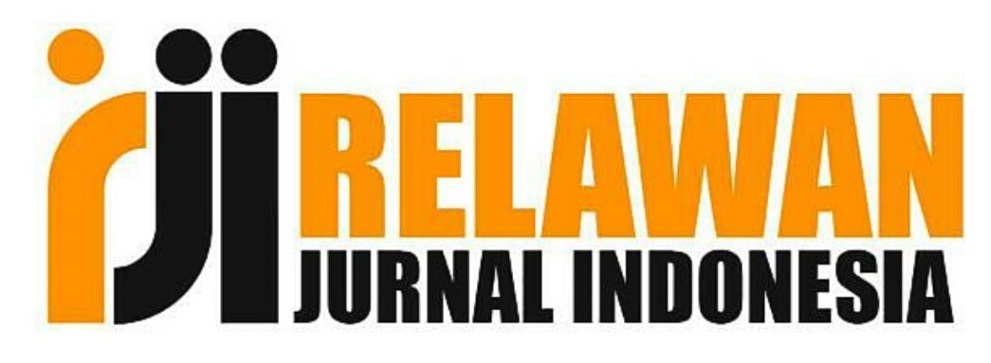Inovasi Media Pembelajaran: Pelatihan Pengembangan Virtual Reality untuk Meningkatkan Immersive Learning
DOI:
https://doi.org/10.36277/abdimasuniversal.v6i2.520Keywords:
virtual reality, community service, vr development trainingAbstract
This community service activity aims to provide training in the development and use of Virtual Reality (VR) technology for social studies teachers at SMA Negeri 4 Madiun. The training includes the presentation of VR concepts, guidance on 360-degree image capture, and VR content development. The training method consists of four stages: assessment to analyze the needs of the partners, preparation to design the program according to the needs, implementation of the program as the core activity, and evaluation to gather feedback from the partners. The results of the community service show that the training activities align with the objectives of the community service and have a positive impact based on the difference in pre-test and post-test scores for each indicator: basic understanding of VR (2.19), understanding how to obtain 360-degree images (2.07), understanding how to develop VR (1.94), ability to develop VR-based learning media (2.26), experience using VR-based media (2.07), and confidence in using VR-based learning media (1.88). The integration of theoretical and practical sessions provided teachers with both knowledge and hands-on experience. This training activity is expected to continue sustainably, with the school providing adequate infrastructure and receiving evaluations from teachers and students on the effectiveness, efficiency, and relevance of VR in the learning process.
Downloads
References
Adisusilo, A. K., & Soebandhi, S. (2021). A Review of Immersivity in Serious Game with the Purpose of Learning Media. International Journal of Applied Science and Engineering, 18(5), 1–11. https://doi.org/10.6703/IJASE.202109_18(5).017.
AlGerafi, M. A. M., Zhou, Y., Oubibi, M., & Wijaya, T. T. (2023). Unlocking the Potential: A Comprehensive Evaluation of Augmented Reality and Virtual Reality in Education. Electronics (Switzerland), 12(18). https://doi.org/10.3390/electronics12183953.
Anwar, M. S., Wang, J., Ullah, A., Khan, W., Ahmad, S., & Fei, Z. (2020). Measuring Quality of Experience for 360-Degree Videos in Virtual Reality. Science China Information Sciences, 63(10), 1–15. https://doi.org/10.1007/s11432-019-2734-y.
Araiza-Alba, P., Keane, T., Chen, W. S., & Kaufman, J. (2021). Immersive Virtual Reality as a Tool to Learn Problem-Solving Skills. Computers and Education, 164(July 2020), 104121. https://doi.org/10.1016/j.compedu.2020.104121.
Asikin, N., Nevrita, N., & Alpindo, O. (2019). Pelatihan Pemanfaatan Media Pembelajaran Berbasis Virtual Reality untuk Guru-Guru IPA Kota Tanjungpinang. Jurnal Anugerah, 1(2), 71–76. https://doi.org/10.31629/anugerah.v1i2.1606.
Bachri, S, Sumarmi, S., Irawan, L. Y., Masruroh, H., Hakiki, A. R. R., Hidiyah, T. M., Billah, E. N., Putri, N. R. C., Prastiwi, M. R. H., & Zimo, H. (2023). Developing GeoWeb Semeru Based on Progressive Web App to Improve Disaster Awareness of Elementary School Students in Semeru Volcano Area. International Conference on Social Knowledge Sciences and Education, 303–320. https://doi.org/10.2991/978-2-38476-168-5_27.
Bachri, Syamsul, Hakiki, A. R. R., Wibowo, N. A., Sumarmi, Amini, R., Yosritzal, & Nursaribilah, E. (2024). Developing an Education Support System for Disaster Management through an Ethnoscience-Based Digital Disaster Learning Module. International Journal of Disaster Risk Reduction, 100(December 2023), 104214. https://doi.org/10.1016/j.ijdrr.2023.104214.
Baxter, G., & Hainey, T. (2024). Using Immersive Technologies to Enhance the Student Learning Experience. Interactive Technology and Smart Education, 21(3), 403–425. https://doi.org/10.1108/ITSE-05-2023-0078.
Bodur, G., Turhan, Z., Kucukkaya, A., & Goktas, P. (2024). Assessing the Virtual Reality Perspectives and Self-Directed Learning Skills of Nursing Students: A Machine Learning-Enhanced Approach. Nurse Education in Practice, 75(January), 103881. https://doi.org/10.1016/j.nepr.2024.103881.
Eiris, R., Wen, J., & Gheisari, M. (2021). iVisit – Practicing Problem-Solving in 360-Degree Panoramic Site Visits LED by Virtual Humans. Automation in Construction, 128(January), 103754. https://doi.org/10.1016/j.autcon.2021.103754.
El-Sofany, H. F., & El-Haggar, N. (2020). The Effectiveness of using Mobile Learning Techniques to Improve Learning Outcomes in Higher Education. International Journal of Interactive Mobile Technologies, 14(8), 4–18. https://doi.org/10.3991/IJIM.V14I08.13125.
Fatahillah, A., Puspitasari, I. D., & Hussen, S. (2020). The Development of Schoology Web-Based Learning Media with GeoGebra to Improve the ICT Literacy on Quadratic Functions. JRAMathEdu (Journal of Research and Advances in Mathematics Education), 5(3), 304–316. https://doi.org/10.23917/jramathedu.v5i3.10692.
Grasnick, A. (2021). Virtual Illusions: The Generation of Spatial Images. In A. Grasnick (Ed.), Basics of Virtual Reality: From the Discovery of Perspective to VR Glasses (pp. 207–288). Springer Berlin Heidelberg. https://doi.org/10.1007/978-3-662-64201-6_4.
Hamad, A., & Jia, B. (2022). How Virtual Reality Technology Has Changed Our Lives: An Overview of the Current and Potential Applications and Limitations. International Journal of Environmental Research and Public Health, 19(18). https://doi.org/10.3390/ijerph191811278.
Haryana, M. R. A., Warsono, S., Achjari, D., & Nahartyo, E. (2022). Virtual Reality Learning Media with Innovative Learning materials to enhance individual learning outcomes based on cognitive load theory. International Journal of Management Education, 20(3), 100657. https://doi.org/10.1016/j.ijme.2022.100657.
Helmie, J., Nurviyani, V., Ristiani, I., Taufik, M. S., & Mulyana, A. (2022). Pelatihan Implementasi Virtual Reality (VR) sebagai Media Pembelajaran Berbasis Digital untuk Mengembangkan Kompetensi Pedagogik Guru-Guru Sd Di Kec. Cipanas. Jurnal Warta Desa (JWD), 4(1), 34–40. https://doi.org/10.29303/jwd.v4i1.170.
Huang, C. L., Luo, Y. F., Yang, S. C., Lu, C. M., & Chen, A. S. (2020). Influence of Students’ Learning Style, Sense of Presence, and Cognitive Load on Learning Outcomes in an Immersive Virtual Reality Learning Environment. Journal of Educational Computing Research, 58(3), 596–615. https://doi.org/10.1177/0735633119867422.
Insorio, A. O. (2024). Integrating Differentiated Instruction to Improve STEM Student s ’ Mathematical Engagement and Academic Performance. International Journal of Didactical Studies, 5(2). https://doi.org/10.33902/ijods.202427678.
Kugurakova, V. V., Golovanova, I. I., Shaidullina, A. R., Khairullina, E. R., & Orekhovskaya, N. A. (2021). Digital Solutions in Educators’ Training: Concept for Implementing a Virtual Reality Simulator. Eurasia Journal of Mathematics, Science and Technology Education, 17(9), 1–10. https://doi.org/10.29333/ejmste/11174.
Kustyarini, K., Utami, S., & Koesmijati, E. (2020). The Importance of Interactive Learning Media in a New Civilization Era. European Journal of Open Education and E-Learning Studies, 5(2), 48–60. https://doi.org/10.46827/ejoe.v5i2.3298.
Liu, R., Wang, L., Lei, J., Wang, Q., & Ren, Y. (2020). Effects of an Immersive Virtual Reality-Based Classroom on Students’ Learning Performance in Science Lessons. British Journal of Educational Technology, 51(6), 2034–2049. https://doi.org/10.1111/bjet.13028.
Madden, J., Pandita, S., Schuldt, J. P., Kim, B., Won, A. S., & Holmes, N. G. (2020). Ready student One: Exploring the Predictors of Student Learning in Virtual Reality. PLoS ONE, 15(3), 1–26. https://doi.org/10.1371/journal.pone.0229788.
Marini, A., Nafisah, S., Sekaringtyas, T., Safitri, D., Lestari, I., Suntari, Y., Umasih, Sudrajat, A., & Iskandar, R. (2022). Mobile Augmented Reality Learning Media with Metaverse to Improve Student Learning Outcomes in Science Class. International Journal of Interactive Mobile Technologies, 16(7), 99–115. https://doi.org/10.3991/ijim.v16i07.25727.
Masruroh, H., Sumarmi, Bachri, S., Sahrina, A., & Rohman, F. (2024). Morphological Characterization and Detailed Geomorphological Mapping based on GIS and Remote Sensing Applications for Environment Sustainability: A Case Study on the Northern Slope of Welirang Young Volcano, Maspo Sub-watershed. Modeling Earth Systems and Environment, 10(3), 4255–4277. https://doi.org/10.1007/s40808-024-02000-8.
McGovern, E., Moreira, G., & Luna-Nevarez, C. (2020). An Application of Virtual Reality in Education: Can this Technology Enhance the Quality of Students’ Learning Experience? Journal of Education for Business, 95(7), 490–496. https://doi.org/10.1080/08832323.2019.1703096.
Mulders, M., Buchner, J., & Kerres, M. (2020). A Framework for the Use of Immersive Virtual Reality in Learning Environments. International Journal of Emerging Technology in Learning (IJET), 15(24), 208–224. https://www.learntechlib.org/p/218562/.
Newman, M., Gatersleben, B., Wyles, K. J., & Ratcliffe, E. (2022). The Use of Virtual Reality in Environment Experiences and the Importance of Realism. Journal of Environmental Psychology, 79(October 2021), 101733. https://doi.org/10.1016/j.jenvp.2021.101733.
Nurjannah, Sumarmi, & Bachri, S. (2023). Pengembangan Media Edukasi berbasis Storymaps terkait Dampak Pertambangan Emas Tanpa Izin terhadap Lingkungan. Jurnal Teknologi Pendidikan, 11(1), 83–99. https://doi.org/http://doi.org/10.31800/jtp.kw.v11n1.p83--99 83.
Paszkiewicz, A., Salach, M., Dymora, P., Bolanowski, M., Budzik, G., & Kubiak, P. (2021). Methodology of Implementing Virtual Reality in Education for Industry 4.0. Sustainability (Switzerland), 13(9), 1–25. https://doi.org/10.3390/su13095049.
Philippe, S., Souchet, A. D., Lameras, P., Petridis, P., Caporal, J., Coldeboeuf, G., & Duzan, H. (2020). Multimodal Teaching, Learning and Training in Virtual Reality: A Review and Case Study. Virtual Reality and Intelligent Hardware, 2(5), 421–442. https://doi.org/10.1016/j.vrih.2020.07.008.
Pirker, J., & Dengel, A. (2021). The Potential of 360° Virtual Reality Videos and Real VR for Education - A Literature Review. IEEE Computer Graphics and Applications, 41(4), 76–89. https://doi.org/10.1109/MCG.2021.3067999.
Putra, A. K., Widianto, A. A., Bachri, S., Khairunisa, T., Dian, Q. V., Khalidy, D. Al, Geografi, P. P., Malang, U. N., No, J. C., & Malang, K. (2023). Serious Game Technology untuk Penguatan Wawasan Bela Negara bagi Marginalized Children Pekerja Imigran Indonesia. Jati Emas (Jurnal Aplikasi Teknik Dan Pengabdian Masyarakat), 7(3), 139–146.
Rahman, A. R., Sumarmi, Bachri, S., & Mkumbachi, R. L. (2023). Pengembangan Media Pembelajaran Progressive WEB APP Berbasis Environmental Learning Untuk Meningkatkan Ecoliteracy Siswa. Jurnal Pendidikan Ilmu Sosial, 10(1), 1–20. https://doi.org/http://dx.doi.org/10.15548/20995.
Ren, Z., Fu, X., Dong, K., Lai, Y., & Zhang, J. (2023). Advanced Study of Optical Imaging Systems for Virtual Reality Head-Mounted Displays. Photonics, 10(5). https://doi.org/10.3390/photonics10050555.
Ruan, J., & Xie, D. (2021). Networked VR: State of the Art, Solutions, and Challenges. Electronics (Switzerland), 10(2), 1–18. https://doi.org/10.3390/electronics10020166.
Silviariza, W. Y., Sumarmi, Utaya, S., Bachri, S., & Handoyo, B. (2023). Development of Evaluation Instruments to Measure the Quality of Spatial Problem Based Learning (SPBL): CIPP Framework. International Journal of Instruction, 16(2), 413–436. https://doi.org/10.29333/iji.2023.16223a.
Silviariza, W. Y., Sumarmi, Utaya, S., Bachri, S., Marhaini, Malisi, F. F., Bobiansyah, M. F., & Hariani, V. (2024). Supporting SDG-4-Education 2030: Collaboration of Teaching Models with Technology (SPB-FC-L Development). International Journal of Technology Enhanced Learning, 16(3), 313–348. https://doi.org/https://doi.org/10.1504/IJTEL.2024.139716.
Simanjuntak, M. P., Hutahaean, J., Marpaung, N., & Ramadhani, D. (2021). Effectiveness of Problem-Based Learning Combined with Computer Simulation on Students’ Problem-Solving and Creative Thinking Skills. International Journal of Instruction, 14(3), 519–534. https://doi.org/10.29333/iji.2021.14330a.
Tegoan, N., Wibowo, S., & Grandhi, S. (2021). Application of the Extended Reality Technology for Teaching New Languages: A Systematic Review. Applied Sciences (Switzerland), 11(23). https://doi.org/10.3390/app112311360.
Utaya, S., Bachri, S., & Isnaeni, N. (2023). Disaster Preparedness of Elementary School Principals , Teachers, and Students based on the Geographical Conditions in Malang District, East Java, Indonesia. Journal of Namibian Studies, 35(2), 1924–1949.
Wahyuningtiyas, K. P., & Bachri, S. (2024). Penerapan Multimedia Pembelajaran Interaktif Berbasis Mobile Learning untuk Meningkatkan Minat dan Hasil Belajar Peserta Didik. Journal of Innovation and Teacher Professionalism, 2(2), 141–149. https://doi.org/10.17977/um084v2i22024p141-149.
Wei, Z., & Yuan, M. (2023). Research on the Current Situation and Future Development Trend of Immersive Virtual Reality in the Field of Education. Sustainability (Switzerland), 15(9). https://doi.org/10.3390/su15097531.
Wu, W. C. V., Manabe, K., Marek, M. W., & Shu, Y. (2023). Enhancing 21st-Century Competencies via Virtual Reality Digital Content Creation. Journal of Research on Technology in Education, 55(3), 388–410. https://doi.org/10.1080/15391523.2021.1962455.
Wulandari, F., Budijanto, Bachri, S., & Utomo, D. H. (2023). Gamification Based on Disaster Education in Reducing Disaster Risk for Students in Disaster Prone Areas: A Systematic Review of Research. In L. Uden & D. Liberona (Eds.), Learning Technology for Education Challenges (pp. 3–16). Springer Nature Switzerland.
Xin, Y. (2022). Influence of Learning Engagement on Learning Effect under a Virtual Reality (VR) Environment. International Journal of Emerging Technologies in Learning, 17(5), 226–237. https://doi.org/10.3991/ijet.v17i05.29451.
Yeo, N. L., White, M. P., Alcock, I., Garside, R., Dean, S. G., Smalley, A. J., & Gatersleben, B. (2020). What is the Best Way of Delivering Virtual Nature for Improving Mood? An Experimental Comparison of High Definition TV, 360° Video, and Computer Generated Virtual Reality. Journal of Environmental Psychology, 72, 101500. https://doi.org/10.1016/j.jenvp.2020.101500.
Yildirim, B., Sahin Topalcengiz, E., Arikan, G., & Timur, S. (2020). Using Virtual Reality in the Classroom: Reflections of STEM Teachers on the Use of Teaching and Learning Tools. Journal of Education in Science, Environment and Health, 6(3), 231–245. https://doi.org/10.21891/jeseh.711779.
Zhan, T., Yin, K., Xiong, J., He, Z., & Wu, S. T. (2020). Augmented Reality and Virtual Reality Displays: Perspectives and Challenges. IScience, 23(8), 101397. https://doi.org/10.1016/j.isci.2020.101397.





















